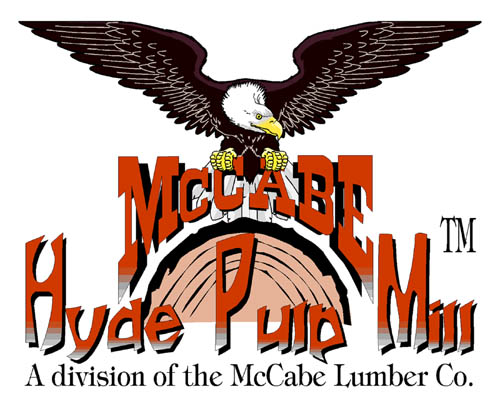
|
 |
Pulping Process
|
|
The Hyde Pulp Mill uses the chemical process to break down the wood chips into pulp. This
process was the kraft process which first appeared in the late 1800’s. The process was
named kraft because it is the German word for strength, and the name is still used today
for the strong brown paper. It produced a stronger, lighter and cheaper pulp, yet darker
in color, than the earlier chemical methods.
In this kraft process, sodium sulfate is chemically reduced to sulfide, which is then introduced into the cooking liquid. This speeds the process of breaking down the pulp chips. While not trying to get into the heavy chemistry of it all, it seems that the alkali concentration in the cooking liquid, and the high temperatures, 155-1750, do most of the work breaking down the chips. Here at the Hyde Pulp Mill, the day starts with the chipping crew working on the latest load of pulp wood. At the chipping shed, they strip off the bark, which is stored for resale to the local tannery, wash off the dirt, and run the logs into the chipper. Chips will vary in size, but the best ones should be ¼" x ¾" to get the best pulp. Oversized chips are run through the chipper a second time, and those considered too small for the good pulp, are fed into the firebox of the boiler. From the chip storage bin, an auger brings chips into the main building. There they are again screened for size and loaded into the digester. This digester is a simple pressure tank that will hold the chips, water, and chemicals while they cook. This process takes around eight hours. After draining, the pulp is washed and dried, then compressed into slabs. These slabs are stacked, wrapped, and wired for shipping to the paper mill. Mr. Hyde moved the wrapping process to the shipping/storage building when it was built. The slabs are moved by cart from the main building to the shipping building. From this process, not only is pulp the result, but several by-products are created. Turpentine is recovered from the digester in the form of vapor. This is decanted to remove the water, and sold to chemical processors. At the Hyde Pulp Mill, turpentine is stored in the vertical tank until a tank car load is stockpiled. Another product from the resin of pine trees is tall oil. This is separated from the liquid used to cook the chips. Tall oil is shipped from Hyde in 55-gallon drums. Another by-product of the pulp mill is one no one wants; the smell. The kraft process generates hydrogen sulfide, which smells like rotten eggs, and spreads out for miles! There are no signs pointing to the Hyde Pulp Mill; everyone just uses their nose. Data gleemed from: Smook, Gary A. Handbook for Pulp & Paper Technologists. Vancouver: Angus Wilde Publication, Inc, 1992 |
Last Changed on: July 10, 2012
© 2012 -- All Rights Reserved